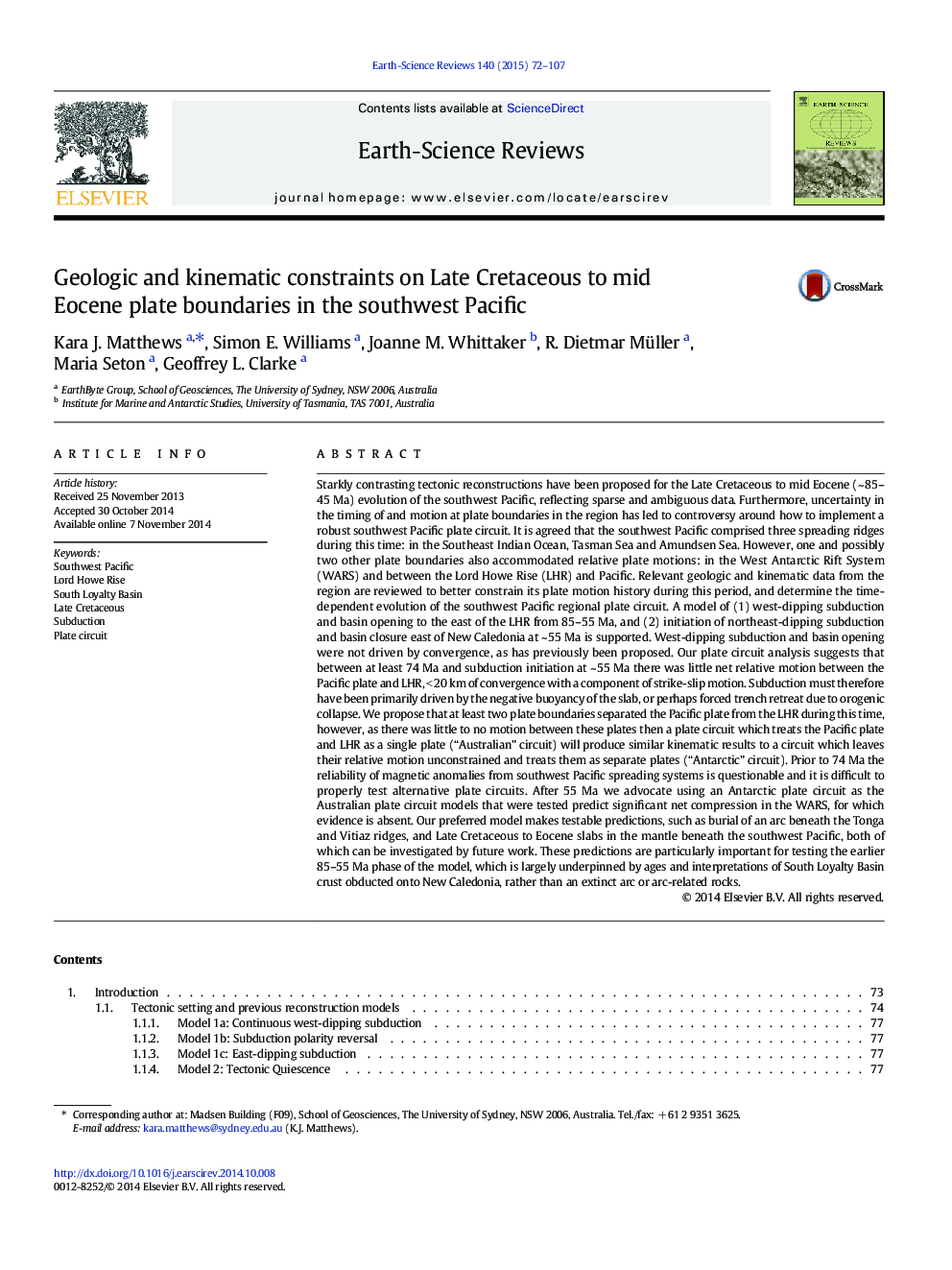| کد مقاله | کد نشریه | سال انتشار | مقاله انگلیسی | نسخه تمام متن |
|---|---|---|---|---|
| 4725660 | 1639962 | 2015 | 36 صفحه PDF | دانلود رایگان |
Starkly contrasting tectonic reconstructions have been proposed for the Late Cretaceous to mid Eocene (~ 85–45 Ma) evolution of the southwest Pacific, reflecting sparse and ambiguous data. Furthermore, uncertainty in the timing of and motion at plate boundaries in the region has led to controversy around how to implement a robust southwest Pacific plate circuit. It is agreed that the southwest Pacific comprised three spreading ridges during this time: in the Southeast Indian Ocean, Tasman Sea and Amundsen Sea. However, one and possibly two other plate boundaries also accommodated relative plate motions: in the West Antarctic Rift System (WARS) and between the Lord Howe Rise (LHR) and Pacific. Relevant geologic and kinematic data from the region are reviewed to better constrain its plate motion history during this period, and determine the time-dependent evolution of the southwest Pacific regional plate circuit. A model of (1) west-dipping subduction and basin opening to the east of the LHR from 85–55 Ma, and (2) initiation of northeast-dipping subduction and basin closure east of New Caledonia at ~ 55 Ma is supported. West-dipping subduction and basin opening were not driven by convergence, as has previously been proposed. Our plate circuit analysis suggests that between at least 74 Ma and subduction initiation at ~ 55 Ma there was little net relative motion between the Pacific plate and LHR, < 20 km of convergence with a component of strike-slip motion. Subduction must therefore have been primarily driven by the negative buoyancy of the slab, or perhaps forced trench retreat due to orogenic collapse. We propose that at least two plate boundaries separated the Pacific plate from the LHR during this time, however, as there was little to no motion between these plates then a plate circuit which treats the Pacific plate and LHR as a single plate (“Australian” circuit) will produce similar kinematic results to a circuit which leaves their relative motion unconstrained and treats them as separate plates (“Antarctic” circuit). Prior to 74 Ma the reliability of magnetic anomalies from southwest Pacific spreading systems is questionable and it is difficult to properly test alternative plate circuits. After 55 Ma we advocate using an Antarctic plate circuit as the Australian plate circuit models that were tested predict significant net compression in the WARS, for which evidence is absent. Our preferred model makes testable predictions, such as burial of an arc beneath the Tonga and Vitiaz ridges, and Late Cretaceous to Eocene slabs in the mantle beneath the southwest Pacific, both of which can be investigated by future work. These predictions are particularly important for testing the earlier 85–55 Ma phase of the model, which is largely underpinned by ages and interpretations of South Loyalty Basin crust obducted onto New Caledonia, rather than an extinct arc or arc-related rocks.
Journal: Earth-Science Reviews - Volume 140, January 2015, Pages 72–107
